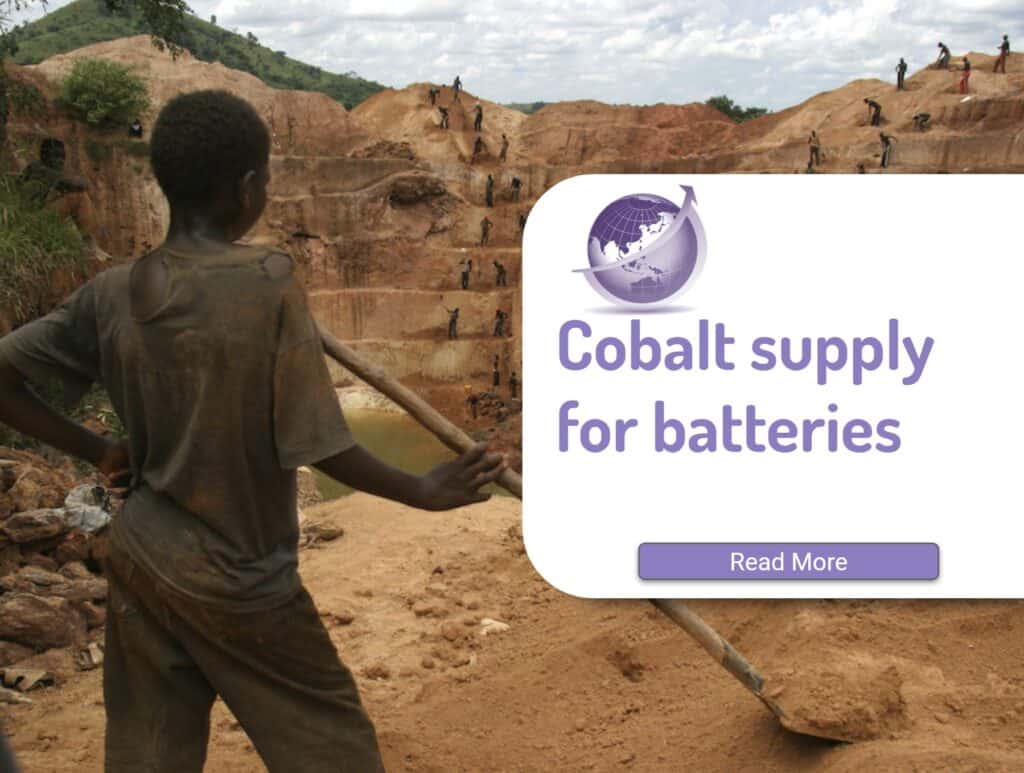A question is often asked – is there enough lithium to meet the demand from EVs and the energy transition from fossil fuels to clean energy?
Lithium for Electric Vehicle demand is exponential. Lithium supply from mining is linear. There are going to be some horrendous situations with legacy ICE vehicle makers who do not understand that the shortfall is there. What will they do when they cannot get supply of lithium, to build cars, and their customers demand EV. They will be go out of business. Currently there is about 500,000 Tonnes LCE used now. There is about a 100,000 Tonnes deficient now. By 2030, there is likely to be a 1 million Tonnes deficit. 25 times more supply by 2025.
Stu Crow: Chair, Lake Resources LKE.ASX
Based on forecast exponential demand of electrification, my view is that the amount of LCE will 30 to 40 times. To decarbonise the globe, the estimated batteries will be 300TW of battery storage in cars and grid energy.
Update by RK Equity Jan 2023
For an up to date analysis, Rodney Hooper from RK Equity on a podcast with Renew Economy (Jan 2023) says there is enough until 2025, but that more is needed by 2030. Hooper identifies 3 issues:
- Refining. This is tough challenge and China has a cost and expertise advantage
- Suitability for battery use. That validation takes up to a year.
- More access to capital to ramp supply faster
Hooper describes the political challenge of developing DLE for more efficient extraction from brines or even challenges from refining and suggests the challenge will continue for the next decade.
Update by Pilbara Minerals Feb 2024
While lithium prices have fallen, demand remains strong with growth of 24% CAGR over next 5 years.

Lithium Over Last Decade

Demand for both Lithium and Graphite in EVs

The answer is definitely, especially if we look at the hard rock quantities of lithium that is currently under development. IGO:ASX is a company moving into expanding LiCO3 production as fast as they can. Here are some of the many hard rock lithium projects, and does not include the lithium from Chile and Argentina.
How Much Lithium for A Car
A typical lithium car battery weighs 450kg. It has about 6 kg of pure lithium (Li)( or 50kg of LCE), nearly 14 kg of cobalt, 27 kg of nickel, more than 40 kg of copper, and 50 kg of graphite—as well as about 181 kg of steel, aluminium, and plastics. That is 880,000 tonnes of Lithium for 80m cars, but note 1g of lithium = 5.17g LCE which means 4.5m tonnes of Lithium Carbonate Equivalent (LCE) is needed. New battery technology has removed the requirement for cobalt.

IGO says data sourced from public filings. Resource estimates for projects other than their own Greenbushes mine may have been prepared using different estimation and reporting methodologies. IGO has not verified and accepts no responsibility for the accuracy of resource estimates other than its own.
Readers should use appropriate caution in relying on this information
Battery Prices Falling
Bloomberg NEF (BNEF) released its 2021 Battery Price Survey, noting that lithium-ion battery pack prices have fallen by 89% in real terms between 2010 and 2021, from above US$1,200 per kilowatt-hour in 2010 to US$132/kWh in 2021. Such cost reductions in the manufacture of battery packs bodes well for the future and are expected to support the continued adoption of electric vehicles, which rely on lithium-ion battery technology.
Surging Demand
A key driver of current market conditions has been surging EV sales in Europe and the explosive growth of China’s New Energy Vehicle (NEV) market. Data released by the China Association of Automobile Manufacturers (CAAM) shows that NEV sales are likely to reach 3.4 million units in 2021 and 5 million units in 2022. If realised, these sales will be 300% more than what the country sold in 2020. In addition, supply chain issues have contributed to pricing outcomes with Bloomberg noting that ongoing maintenance requirements at a series of lithium plants in China, anti-pollution curtailments associated with the Winter Olympics in China, the arrival of the COVID-19 Omicron variant in China and labour shortages stemming from COVID-19 related State border closures in Western Australia have contributed to supply shortages with lithium raw materials.
Changing Battery Chemistry Changes Lithium Demand
| Measure | Lithium-Ion (Nickel) | Lithium-Ion Phosphate Battery |
|---|---|---|
| Normal Battery Size | 70kWhr | 100kWhr |
| Voltage | 3.7v | 3.2V |
| Energy Density | Li2CO3 = 220mAh/g | LiFeP04 = 160mAh/g |
| Energy Capacity Weight | 816Wh/kg | 512Wh/kg |
| Cathode Weight | 79.6kg | 127kg |
| Lithium as % | 7% | 4.3% |
| Amount of Lithium (kg) | 5.6kg | 5.7kg |
| Theoretical Amount | 30kg | 30kg |
| Current Amount of LCE | 60kg | 130kg |
Lithium Supply Video
A 48 minute from Small Caps Lithium: supply and demand challenges facing the market topic has Ioneer’s (ASX: INR) MD Bernard Rowe, Kalamazoo Resources’ (ASX: KZR) CEO Luke Reinehr and Lake Resources (ASX: LKE) chairman Stu Crow.









